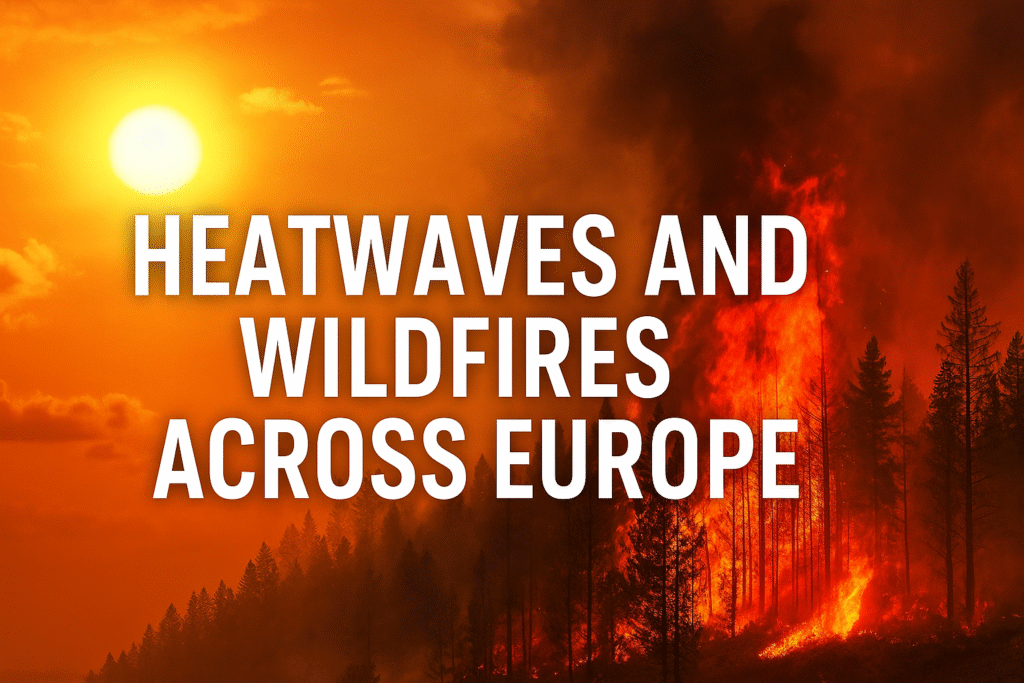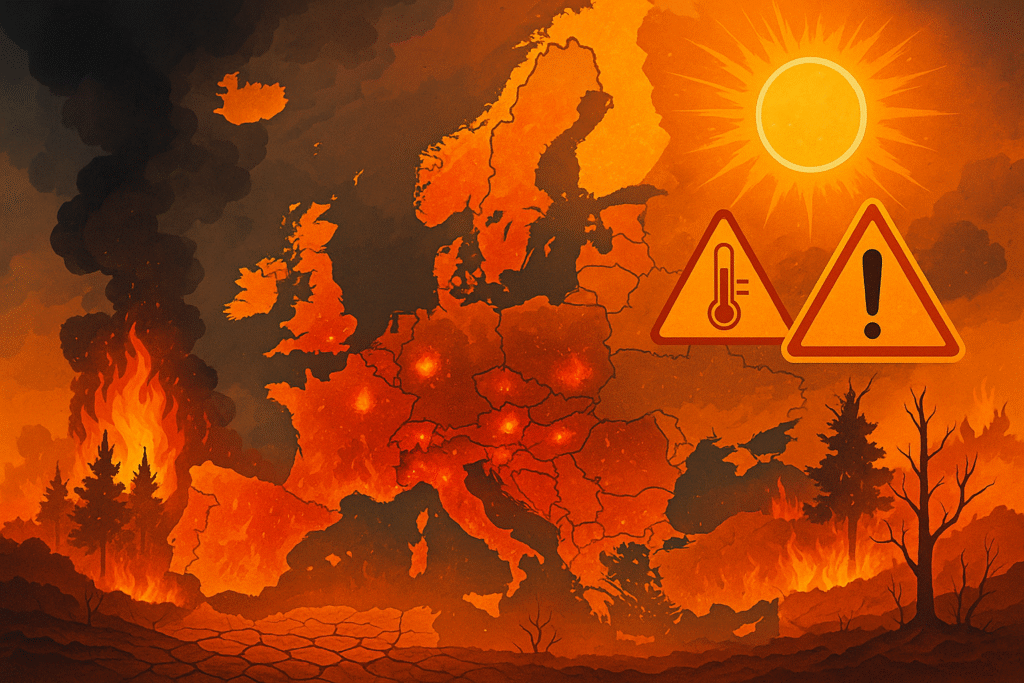
As climate change gets worse, Europe is dealing with more damaging heatwaves and wildfire summers than ever. From Italy to Greece and Spain to Croatia, Europe heatwaves and wildfires are happening all over the continent, causing people to leave their homes, hurting nature, and making people ask for stronger plans to protect against climate change.
🔥 Europe Heatwaves and Wildfires
In July 2025, southern Europe saw temperatures go above 45°C (113°F), leading to big wildfires that burned hundreds of thousands of hectares of forests and farmland.
The countries most affected are
Greece: Wildfires near Athens and on the island of Rhodes have made over 35,000 people leave their homes. Firefighters from many EU countries are helping Greek teams fight the fires.
Italy: Sicily and Calabria had record high temperatures, with fires near Palermo destroying homes and old buildings.
Spain: Catalonia and Andalusia have declared climate emergencies because of wildfires and water problems.
France: Provence and Corsica are seeing more fires, putting emergency services under a lot of pressure.
Unprecedented Heatwaves: Not Just the South
Even cooler places like Germany, the Netherlands, and the UK are facing long heatwaves, leading to heatstroke, power cuts, and bad crops.
Cities are especially at risk because the urban heat island effect keeps temperatures high even at night.
Hospitals in Paris, Berlin, and Madrid are seeing more people with heat-related illnesses, especially among older people and children.
What’s Causing These Extreme Events?

- The 2025 heatwaves are happening because of:
- Long periods of high pressure trapping hot air over the continent
- Little rain and dry plants acting as fuel for fires
- Climate change making extreme weather happen more often and more strongly
- Scientists say these events match what was predicted for a warmer world.
- A recent report from the EU Climate Observatory says that without quick steps to cut emissions, summers like this could become normal by the 2030s.
How Are Governments Responding to Europe Heatwaves and Wildfires?
European countries have started working together across borders, including
- Using EU firefighting planes and helicopters
- Making fire buffer zones around at-risk areas
- Planning large evacuations and setting up public cooling centers
- Controlling water use and giving help to farmers
- The EU Commission has also held an emergency meeting to talk about better disaster plans, improving infrastructure, and speeding up renewable energy projects.
Global Consequences
These events don’t just affect one area—they have widespread effects around the world:
- Tourism in Italy, Greece, and Spain has dropped because of travel warnings
- Prices for wheat, olive oil, and wine have gone up because of disrupted farming
- Wildfires have caused a big increase in carbon emissions, making the climate crisis worse
- Insurance costs have gone up in many parts of Europe
Also, the air quality in the Mediterranean has gotten much worse, with smoke from fires traveling to Northern Africa and Central Europe.
What Can You Do?
Here’s how people and communities can help themselves and others:
- Stay updated: Use official apps for weather and fire alerts (like Copernicus or MeteoAlarm)
- Save water and electricity: This helps reduce pressure on public services during emergencies
- Make your home safer: If you live in an area where fires are common, remove plants near your house
- Support laws that fight climate change: Push for clean energy, tree planting, and limits on pollution
- Give to relief funds: Help families who have been displaced and those working on the front lines
A Wake-Up Call for Climate Action
The extreme summer in Europe this year isn’t just a one-time thing—it’s part of a bigger, troubling trend.
If nothing changes, disasters like these could happen every year.
Experts are calling for urgent action, including
- Reducing greenhouse gas emissions quickly
- Investing in early warning systems and strong infrastructure
- Teaching people how to prepare for and adapt to climate changes
As UN Secretary-General António Guterres said recently:
“The time of global boiling has arrived.
The future is being written now—by what we choose to do, or fail to do. ”
Final Thoughts
The Europe heatwaves and wildfires of 2025 show how vulnerable we are to climate change—even in developed countries.
Europe needs to act fast and also take the lead in global climate efforts. For individuals, staying informed and getting involved is no longer a choice—it’s a must.
Let be more than just a headline. Let it be a turning point.
What is causing the Europe heatwaves and wildfires in 2025?
The Europe heatwaves and wildfires are primarily caused by extreme temperatures, prolonged drought, and high winds—fueled further by climate change and dry vegetation across the continent.
Which regions are worst affected by the Europe heatwaves and wildfires?
Southern Europe—including Greece, Italy, Spain, and parts of France—has been hit hardest by the 2025 Europe heatwaves and wildfires, resulting in mass evacuations and widespread destruction.
Are Europe heatwaves and wildfires becoming more common?
yes. According to climate experts, Europe heatwaves and wildfires are becoming more frequent, intense, and longer-lasting due to rising global temperatures and inadequate forest management.

